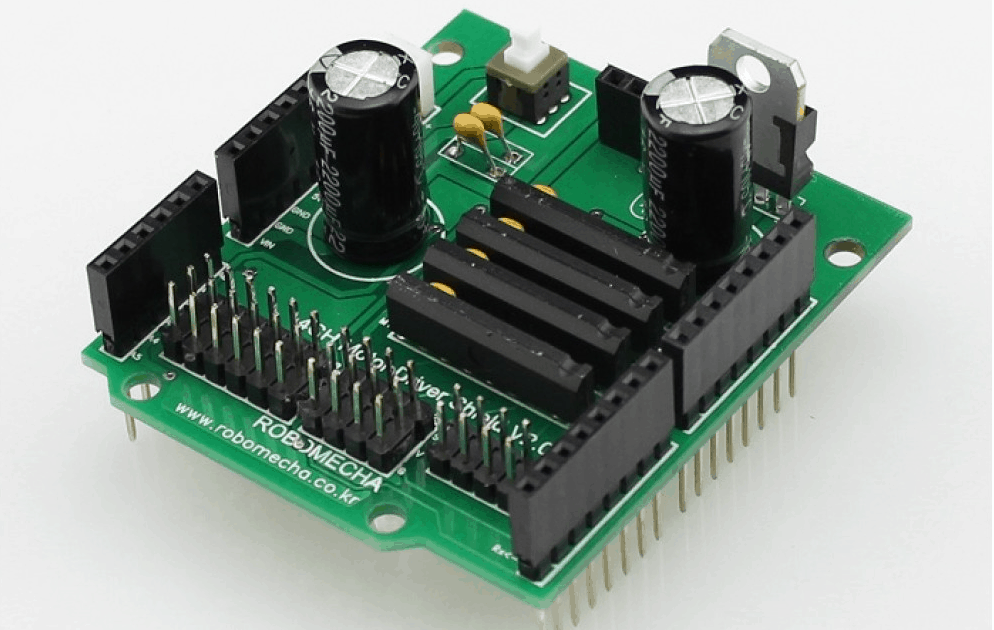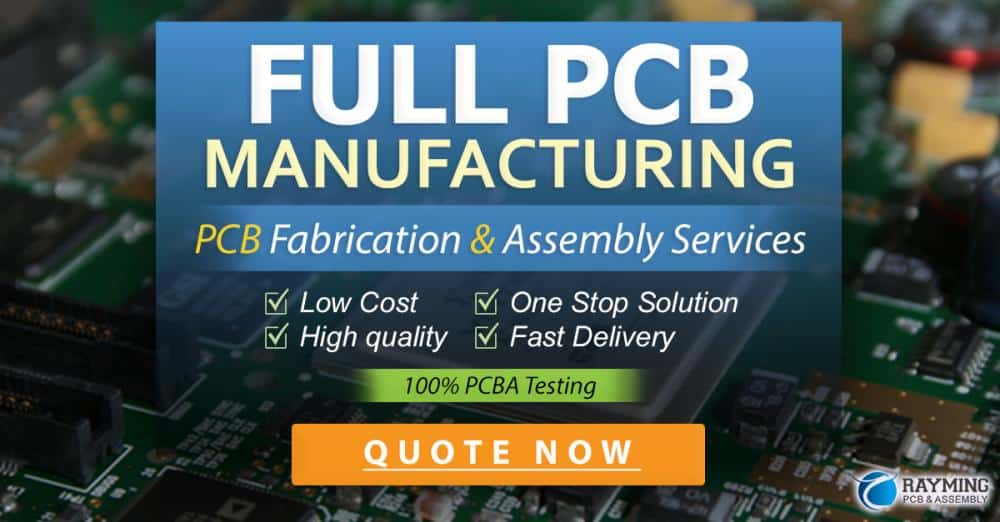SMT (Surface Mount Technology) printed circuit boards have become increasingly popular in recent years due to their numerous advantages over traditional through-hole PCBs. SMT PCBs are smaller, lighter, and more cost-effective to produce, making them ideal for use in a wide range of electronic devices.
Unlike through-hole PCBs, which require components to be inserted into drilled holes on the board, SMT PCBs use surface-mounted components that are soldered directly onto the board. This allows for a higher component density and more efficient use of space, making it possible to create smaller and more compact devices. Additionally, SMT PCBs can be produced using automated assembly techniques, which reduces production time and costs.
Overall, SMT printed circuit boards offer a number of benefits that make them an attractive option for electronic device manufacturers. With their smaller size, lower production costs, and higher component density, SMT PCBs are well-suited for use in a wide range of applications, from consumer electronics to industrial equipment.
What is an SMT Printed Circuit Board?
A Surface Mount Technology (SMT) Printed Circuit Board (PCB) is a type of PCB that uses surface mount components instead of through-hole components. SMT components are smaller and lighter than through-hole components, making them ideal for high-density and miniaturized electronic devices.
SMT PCBs are designed with a flat surface that allows components to be mounted directly onto the board, without the need for wires or leads. This makes the assembly process faster and more efficient, as well as reducing the size and weight of the final product.
SMT PCBs are widely used in a variety of electronic devices, including smartphones, tablets, laptops, and other portable devices. They are also used in industrial equipment, medical devices, and automotive electronics.
Compared to through-hole PCBs, SMT PCBs offer several advantages, such as:
- Smaller size and weight
- Higher component density
- Faster assembly time
- Better electrical performance
- Lower cost
Overall, SMT PCBs are a popular choice for modern electronic devices due to their high performance, reliability, and cost-effectiveness.
Advantages of SMT Printed Circuit Boards
Space Efficiency
One of the main advantages of SMT printed circuit boards is their space efficiency. SMT components are much smaller than their through-hole counterparts, which allows for a much higher density of components on a single board. This means that SMT boards can be made smaller and lighter than through-hole boards, making them ideal for applications where space is at a premium.
Cost Savings
Another advantage of SMT printed circuit boards is cost savings. SMT components are generally less expensive than through-hole components, and they require less manual labor to assemble. This means that SMT boards can be produced more quickly and at a lower cost than through-hole boards.
Improved Electrical Performance
SMT printed circuit boards also offer improved electrical performance over through-hole boards. SMT components have shorter lead lengths, which reduces the amount of inductance and capacitance in the circuit. This can lead to faster signal speeds, better signal integrity, and improved overall performance.
In addition, SMT components are typically mounted directly onto the surface of the board, which reduces the amount of parasitic capacitance and inductance in the circuit. This can lead to improved high-frequency performance and reduced noise.
Overall, SMT printed circuit boards offer a number of advantages over through-hole boards, including space efficiency, cost savings, and improved electrical performance.
Design Considerations for SMT Printed Circuit Boards
When designing a surface-mount technology (SMT) printed circuit board (PCB), there are several considerations to keep in mind to ensure the board functions properly and meets the desired specifications. Here are some key design considerations to keep in mind:
Component Placement

The placement of components on an SMT PCB is critical for proper functionality and efficient assembly. Here are some tips to consider:
- Group components based on their function to minimize signal interference and reduce the length of signal paths.
- Place components in a way that allows for efficient and easy assembly, such as placing larger components first and then filling in smaller ones.
- Avoid placing components too close together, as this can lead to overheating and signal interference.
- Ensure that all components are placed within the board’s specified clearance and keep in mind any necessary spacing for heat dissipation.
Soldering Process
The soldering process is crucial for creating a reliable and robust SMT PCB. Here are some important considerations:
- Choose the appropriate soldering method for the board’s design and components, such as reflow soldering or wave soldering.
- Use high-quality solder and ensure that the solder paste is applied evenly to avoid issues such as bridging or tombstoning.
- Ensure that the soldering temperature and time are within the recommended range for the components used to avoid damage or failure.
- Consider using a solder mask to protect areas of the board that should not be soldered and to prevent solder from spreading.
Thermal Management
Thermal management is a key consideration for SMT PCBs, as overheating can cause damage and failure. Here are some tips to keep in mind:
- Place components in a way that allows for proper heat dissipation, such as placing heat-generating components near a heat sink or ensuring that there is adequate airflow around the board.
- Choose materials with high thermal conductivity, such as copper, for the board and its components.
- Consider using a thermal relief pad for components that require heat dissipation, such as voltage regulators or power transistors.
- Test the board’s thermal performance to ensure that it meets the desired specifications and make any necessary adjustments.
By carefully considering component placement, the soldering process, and thermal management, you can create a reliable and efficient SMT PCB that meets your design requirements.
Manufacturing Process for SMT Printed Circuit Boards
Solder Paste Application
The first step in manufacturing SMT printed circuit boards is applying solder paste to the board. This is typically done using a stencil that is placed over the board, with the solder paste being applied through the openings in the stencil using a squeegee. The stencil ensures that the solder paste is applied only to the areas where components will be placed.
Component Placement and Reflow
Once the solder paste has been applied, the components are placed onto the board using automated equipment. The components are picked up from reels or trays and placed onto the board with a high degree of accuracy. Once all the components have been placed, the board is ready for reflow.
Reflow is the process of heating the board to melt the solder paste, which then solidifies to form a strong bond between the components and the board. The temperature and duration of the reflow process are carefully controlled to ensure that the solder melts and solidifies properly.
Inspection and Testing
After reflow, the board is inspected to ensure that all the components are properly soldered and that there are no defects. This is typically done using automated optical inspection (AOI) equipment, which can quickly and accurately detect any issues.
Once the board has passed inspection, it is ready for testing. This involves applying power to the board and checking that all the components are functioning properly. Any issues that are detected during testing are addressed before the board is shipped to the customer.
In conclusion, the manufacturing process for SMT printed circuit boards involves applying solder paste, placing components, and reflowing the board before inspecting and testing it. This process is carefully controlled to ensure that the finished board meets the required specifications and functions properly.
Common Applications of SMT Printed Circuit Boards
SMT (Surface Mount Technology) printed circuit boards have become increasingly popular in recent years due to their compact size, high reliability, and cost-effectiveness. They are widely used in various industries, including consumer electronics, automotive, medical devices, and more.
Consumer Electronics
Consumer electronics are one of the largest markets for SMT printed circuit boards. These boards are used in a wide range of devices, including smartphones, laptops, tablets, gaming consoles, and more. The compact size of SMT PCBs makes them ideal for portable devices, where space is at a premium. They are also highly reliable, which is essential for consumer electronics that are expected to last for years.
Automotive Industry
SMT printed circuit boards are also used extensively in the automotive industry. They are used in various applications, including engine control units, infotainment systems, and safety systems. SMT PCBs are ideal for the automotive industry because they can withstand extreme temperatures, vibrations, and other harsh conditions.
Medical Devices
The medical device industry is another area where SMT PCBs are widely used. They are used in various medical devices, including diagnostic equipment, monitoring devices, and implantable devices. SMT PCBs are ideal for medical devices because they are compact, reliable, and can be manufactured to meet the strict requirements of the medical industry.
In conclusion, SMT printed circuit boards have become an essential component in many industries, including consumer electronics, automotive, medical devices, and more. Their compact size, high reliability, and cost-effectiveness make them an ideal choice for a wide range of applications.
Future of SMT Printed Circuit Boards

As the demand for smaller and more efficient electronic devices continues to grow, the future of SMT printed circuit boards (PCBs) looks promising. SMT PCBs have already replaced through-hole PCBs in most applications due to their smaller size, higher component density, and better electrical performance. However, there are still some challenges that need to be addressed to improve their functionality and reliability.
One of the main challenges is the increasing demand for higher data transfer rates and frequencies. This requires SMT PCBs to have better signal integrity and lower noise levels. To achieve this, manufacturers are exploring new materials and design techniques, such as using high-frequency laminates, reducing the number of vias, and optimizing the trace routing.
Another challenge is the need for more environmentally friendly and sustainable manufacturing processes. SMT PCBs are typically manufactured using a combination of chemicals, such as etchants, solvents, and fluxes, which can be harmful to the environment and human health. To address this, manufacturers are developing new materials and processes that are more eco-friendly, such as using water-based fluxes and lead-free solders.
In addition, the future of SMT PCBs is expected to be heavily influenced by the Internet of Things (IoT) and Industry 4.0. As more devices become interconnected, there will be a greater need for SMT PCBs that can handle large amounts of data and communicate seamlessly with other devices. This will require SMT PCBs to be more flexible, modular, and customizable, with features such as built-in sensors, wireless connectivity, and embedded software.
Overall, the future of SMT PCBs looks bright, with new materials, technologies, and applications emerging all the time. As the demand for smaller, faster, and more efficient electronic devices continues to grow, SMT PCBs will play an increasingly important role in shaping the future of technology.
Comments are closed